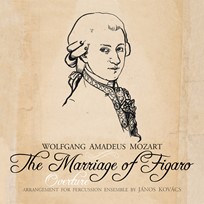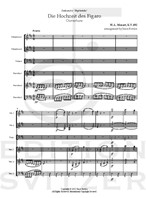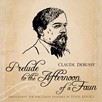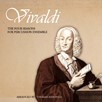
The Marriage of Figaro
Composer: Wolfgang Amadeus Mozart
Instrument: Percussion Ensemble
Level: unknown
Published: 2013
Price: €35.00
Item details
-
Description +
-
Arranged by János Kovács
Duration: 5 min.”... On this occasion our attention is being captured by the overture to the opera The Marriage of Figaro by W. A. Mozart, through the emotions and aesthetic satisfactions conveyed by music of rare beauty. The rich content of this chant of love articulated through many complex forms of expression highlights the enormous power of the basic but noble sentiment simply called “love”.
I am convinced that through the arrangement of the overture to “The Marriage of Figaro” János Kovács contributes to the redefinition of Mozart’s spirit, and the assignment of the score to the percussion ensemble highlights the wealth of ideas of the genial Viennese composer ...”
Vasile Cazan, conductor and artistic director of the Târgu Mureș State Philharmonic
-
-
Instrumentation +
-
Percussion Ensemble:
2 Vibraphones
1 Timpani (player)
3 Marimbas
-
-
About the composer +
-
Born on January 27, 1756, in Salzburg, Austria, Wolfgang Amadeus Mozart was a musician capable of playing multiple instruments who started playing in public at the age of 6. Over the years, Mozart aligned himself with a variety of European venues and patrons, composing hundreds of works that included sonatas, symphonies, masses, concertos and operas, marked by vivid emotion and sophisticated textures.
-
-
Reviews +
-
Review (Percussive Notes, May 2014)
For an ensemble looking for a classical element to their program, look no further than this overture from János Kovács. This arrangement follows the original orchestral version to the letter, even keeping the original timpani part intact. Mature marimbists will be needed to play this, as diatonic lines move swiftly throughout the range of the instrument. Touch is going to be a primary concern to obtain balance, especially with the timpani part, as it can easily overpower the ensemble.
To reduce the number of players in the ensemble, the timpani part mirrors the marimba 3 part and could easily be omitted to create a purely mallet ensemble. Likewise, with some creative editing, the marimba 3 part could fit on the same instrument as marimba 1, and the two vibraphone parts could be modified for one player to cover both parts, thus eliminating the need for multiple mallet instruments.
This overture would be perfect for an advanced high school or college ensemble looking for the challenge of replicating period-specific music with non-period instruments.
—Marcus D. Reddick
-
-
Credits +
-
Front Cover graphics and layout: Amália Kovács
Engraving: János Kovács & Johan Svitzer
Translation: Margit Szallós-Farkas
Printed in Copenhagen, Denmark
Copyright © Edition SVITZER
www.editionsvitzer.com
-


